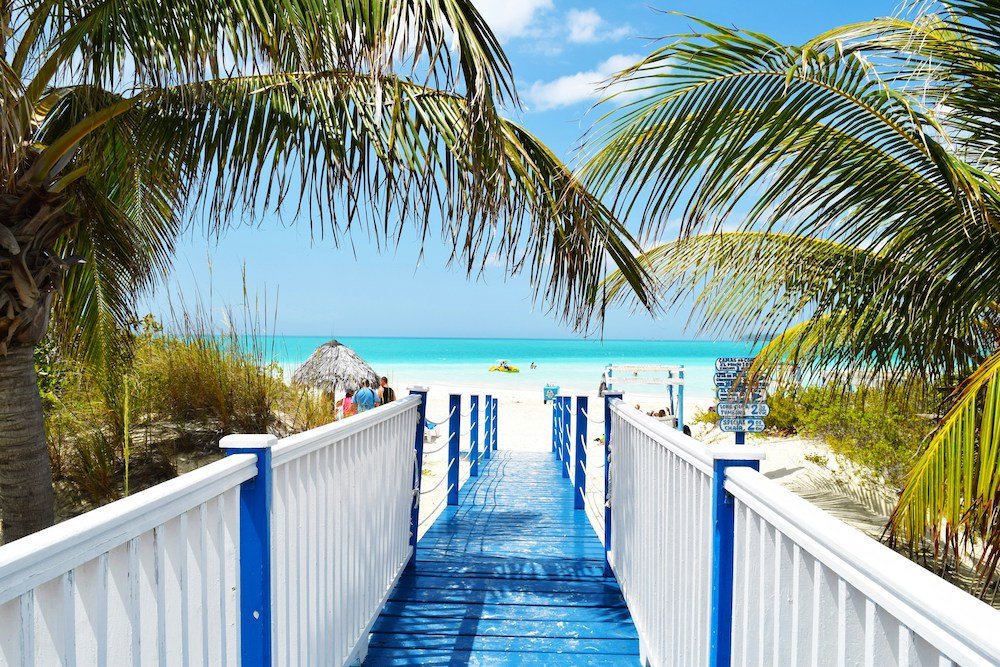
Want to find out what is the largest island in the Caribbean?
The Caribbean region, with its azure waters, vibrant cultures, and lush landscapes, stands as a beacon of beauty and diversity in the world.
Comprising thousands of islands and islets scattered like gems across the Caribbean Sea, this enchanting region has captured the imaginations of travelers and adventurers for centuries.
Stretching from the southeastern tip of the United States to the coast of Venezuela in South America, the Caribbean encompasses a vast expanse of tropical paradise.
Its islands, large and small, form a mosaic of cultures and ecosystems, each offering its own unique allure to visitors and residents alike.
The islands of the Caribbean play a pivotal role in the region’s history, economy, and ecology.
From serving as strategic outposts for colonial powers to nurturing diverse ecosystems teeming with life, these islands are the lifeblood of the Caribbean.
Among the multitude of islands that grace the Caribbean Sea, one stands out as the largest and most captivating: Cuba.
With its expansive terrain, rich history, and vibrant culture, Cuba holds a special place in the hearts of travelers and scholars alike.
As we embark on a journey to explore the wonders of the Caribbean, let us first turn our gaze to Cuba, the jewel of the Caribbean crown.
Cuba: The Largest Island in the Caribbean
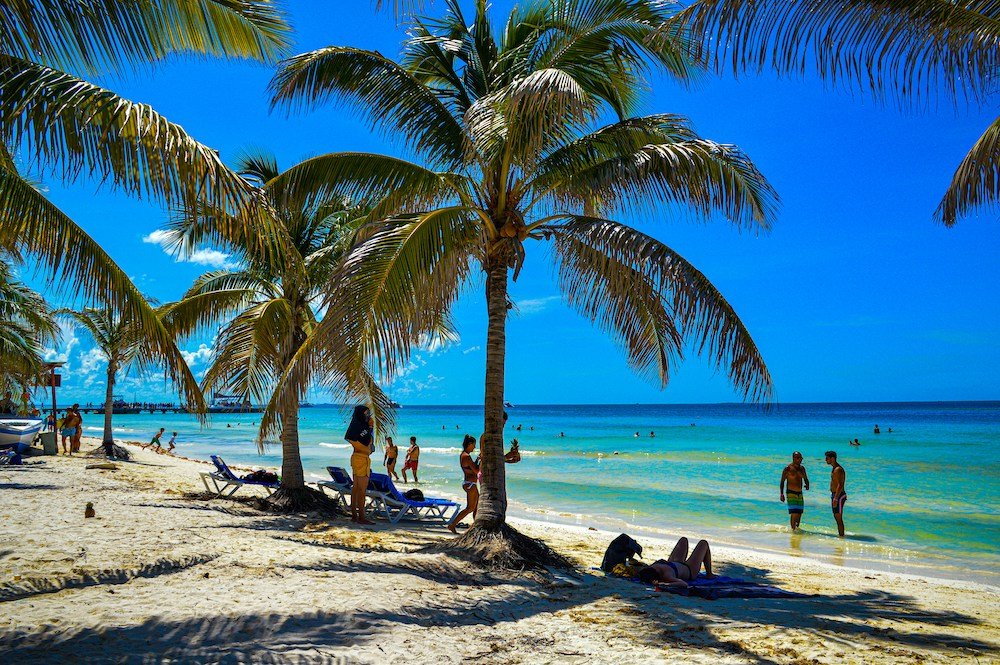
Cuba stands as the largest island in the Caribbean, boasting a rich tapestry of culture, history, and natural beauty. Here are some key facts about Cuba:
Geographical Features:
- Size and Location: With an area of approximately 109,884 square kilometers (42,426 square miles), Cuba dominates the Caribbean archipelago. It is situated in the northern Caribbean Sea, south of the eastern United States and the Bahamas, west of Haiti, and north of Jamaica.
- Landscape Diversity: Cuba’s landscape is characterized by a diverse terrain, including plains, mountains, and coastal regions. The island is home to the Sierra Maestra mountain range in the southeast, which includes Pico Turquino, the highest point in Cuba at 6,476 feet (1,974 meters).
- Coastline: Cuba boasts an extensive coastline that stretches over 3,500 miles (5,600 kilometers), featuring stunning beaches, coves, and coral reefs.
Climate and Biodiversity:
- Tropical Climate: Cuba experiences a tropical climate, with warm temperatures year-round. The island is susceptible to hurricanes, particularly during the Atlantic hurricane season from June to November.
- Biodiversity Hotspot: Cuba is recognized as a biodiversity hotspot, hosting a remarkable array of flora and fauna. Its ecosystems range from lush rainforests and mangrove swamps to dry savannas and coastal plains.
Historical and Cultural Significance:
- Indigenous Heritage: Before the arrival of European colonizers, Cuba was inhabited by indigenous peoples such as the Taíno and Ciboney. Their legacy is evident in archaeological sites scattered across the island.
- Colonial Legacy: Cuba’s history is deeply intertwined with Spanish colonization, which began in the early 16th century. The island became a strategic hub for Spanish trade and played a pivotal role in the transatlantic slave trade.
- Revolutionary Icon: Cuba gained independence from Spain in 1898 following the Spanish-American War. In the 20th century, the Cuban Revolution led by Fidel Castro and Che Guevara transformed the nation’s political landscape, shaping its socialist identity.
Economy and Industry:
- Diverse Economy: Cuba’s economy is multifaceted, encompassing agriculture, tourism, manufacturing, and biotechnology. The government controls key sectors of the economy, although recent reforms have sought to encourage private enterprise.
- Tourism Hub: Tourism is a vital sector of Cuba’s economy, drawing millions of visitors each year to its pristine beaches, historic cities, and vibrant culture. The tourism industry provides employment opportunities and generates significant revenue for the country.
Governance and Political Structure:
- Single-Party State: Cuba operates under a socialist system with a single-party political structure dominated by the Communist Party of Cuba. The government exercises control over media, telecommunications, and other key institutions.
- Challenges and Opportunities: Cuba faces various challenges, including economic constraints, limited internet access, and restrictions on political freedoms. Nevertheless, the island continues to pursue diplomatic relations with other nations and explore avenues for economic development.
Cuba’s Historical and Cultural Significance
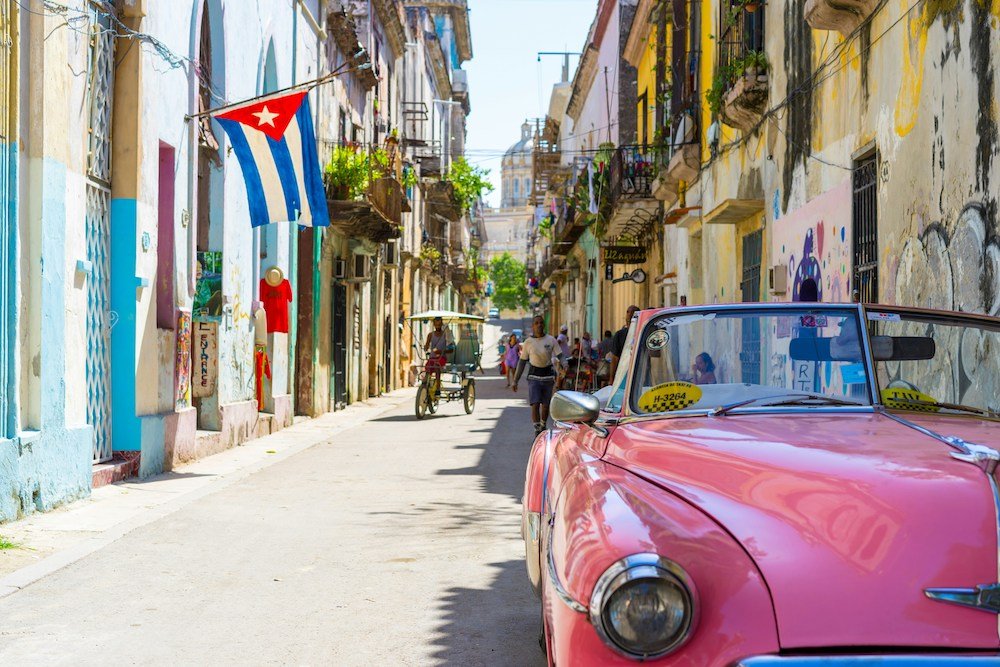
Cuba’s history is a tapestry woven with the threads of indigenous heritage, colonial conquest, and revolutionary fervor.
From the early inhabitants to the modern era, Cuba’s past has shaped its identity and left an indelible mark on its culture and society.
Long before the arrival of European explorers, Cuba was home to indigenous peoples known as the Taíno and Ciboney.
These ancient cultures flourished on the island, cultivating crops, crafting intricate pottery, and building vibrant communities.
The legacy of the indigenous peoples lives on in the archaeological sites scattered across Cuba, offering glimpses into a bygone era.
In 1492, Christopher Columbus landed on the shores of Cuba during his first voyage to the New World.
The arrival of Spanish conquistadors marked the beginning of a new chapter in Cuba’s history, as the island became a strategic outpost for Spain’s imperial ambitions in the Americas.
Under Spanish rule, Cuba thrived as a hub of trade and commerce, its cities adorned with grand cathedrals, palaces, and fortresses.
However, Spanish colonization also brought hardship and exploitation to Cuba’s indigenous inhabitants.
Forced labor, disease, and cultural assimilation took a heavy toll on the indigenous populations, leading to their eventual decline.
In the 20th century, Cuba emerged as a crucible of revolution and resistance against colonial oppression and inequality.
Led by Fidel Castro, Che Guevara, and other revolutionary figures, the Cuban Revolution of 1959 sought to overthrow the authoritarian regime of Fulgencio Batista and establish a socialist state based on principles of social justice and equality.
The Cuban Revolution sparked a wave of social and political transformation, reshaping Cuba’s economy, society, and international relations.
Land reforms, education initiatives, and healthcare programs were implemented to empower the Cuban people and build a more equitable society.
Despite facing economic challenges and geopolitical tensions, the Cuban Revolution remains a defining moment in Cuba’s history, symbolizing the aspirations of a nation striving for independence and self-determination.
Cuba’s Natural Wonders and Biodiversity
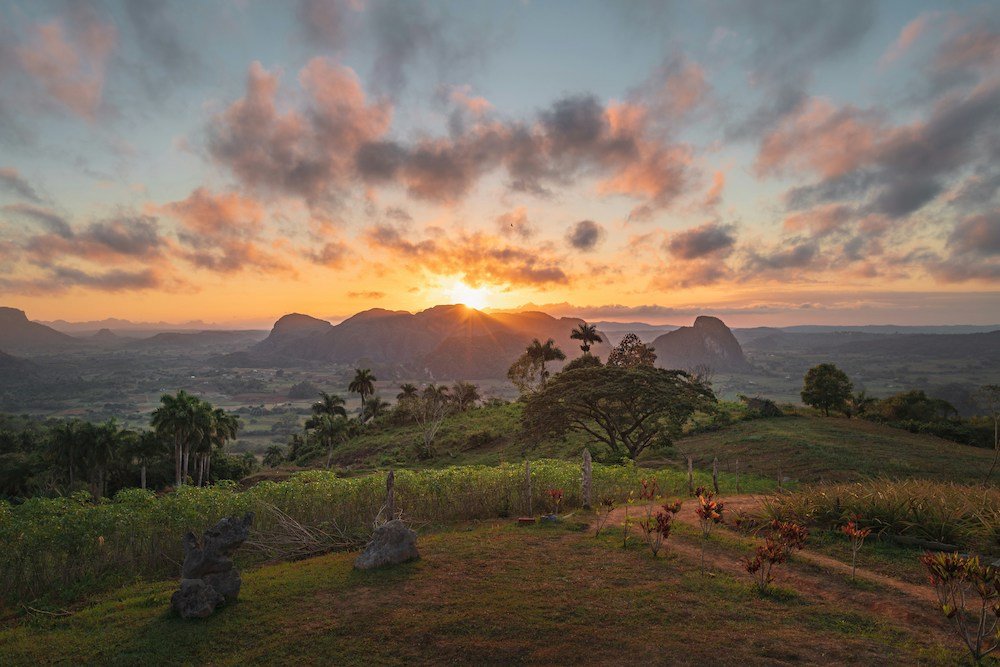
Cuba’s breathtaking landscapes and rich biodiversity make it a paradise for nature enthusiasts and eco-travelers.
From lush rainforests and pristine beaches to towering mountains and vibrant coral reefs, Cuba boasts a kaleidoscope of ecosystems teeming with life.
Cuba’s diverse geography gives rise to an array of ecosystems, each with its own unique characteristics and ecological importance.
The island is home to dense forests, wetlands, mangrove swamps, and coastal plains, providing habitats for a remarkable variety of plant and animal species.
In the heart of Cuba lies the Sierra Maestra mountain range, whose rugged peaks and verdant valleys harbor rare species and endemic flora found nowhere else on Earth.
The fertile soils of the Pinar del Río province nurture lush tobacco fields and picturesque landscapes immortalized in the works of artists and poets.
Cuba’s isolation from the mainland has resulted in the evolution of numerous endemic species found exclusively within its borders.
From the colorful Cuban trogon to the elusive Cuban solenodon, the island’s fauna is a testament to its ecological richness and biological diversity.
The coral reefs that fringe Cuba’s coastline are among the most biodiverse in the Caribbean, supporting a dazzling array of marine life, including vibrant corals, tropical fish, and majestic sea turtles.
Cuba’s wetlands, such as the Zapata Peninsula and Ciénaga de Zapata Biosphere Reserve, provide critical habitat for migratory birds and endangered species.
Cuba’s natural beauty is showcased in its iconic landmarks and scenic spots, which draw visitors from around the world to marvel at their splendor.
The Viñales Valley, with its limestone mogotes and fertile tobacco fields, is a UNESCO World Heritage Site renowned for its breathtaking vistas and rural charm.
The pristine beaches of Varadero, Cayo Coco, and Guardalavaca beckon sun-seekers and water enthusiasts with their crystal-clear waters and powdery white sands.
Cuba’s national parks, including Alejandro de Humboldt and Desembarco del Granma, offer opportunities for hiking, birdwatching, and exploring pristine wilderness areas.
From the verdant forests of the interior to the azure waters of its coastlines, Cuba’s natural wonders captivate the imagination and inspire a sense of wonder and appreciation for the beauty of the natural world.
Economy and Industry in Cuba
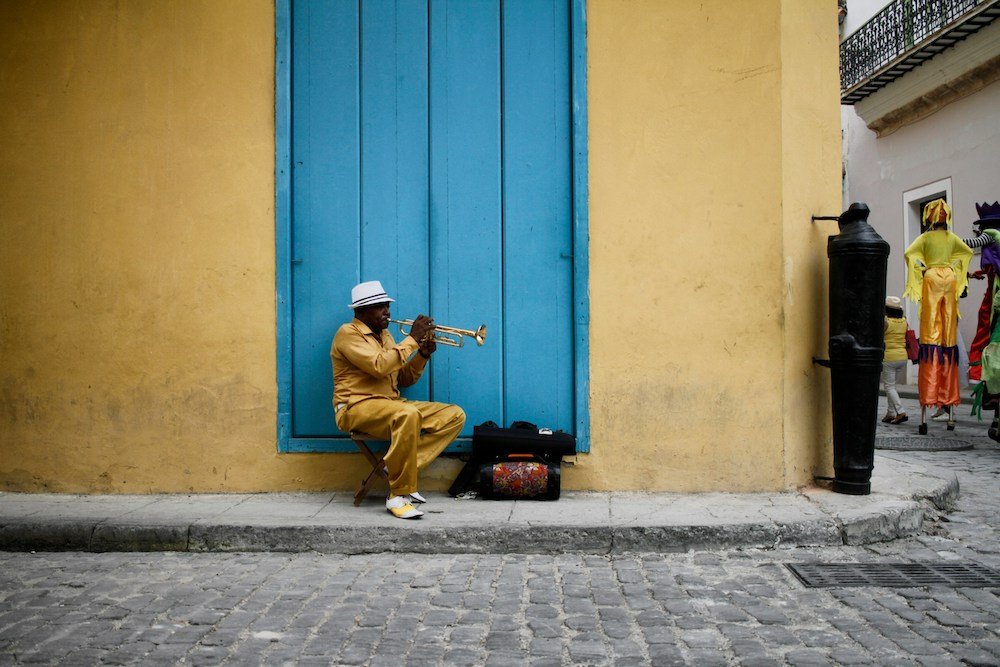
Cuba’s economy is a complex tapestry woven from a variety of industries and sectors, each playing a distinct role in shaping the nation’s economic landscape.
From agriculture to tourism, Cuba’s economy reflects its unique history, geography, and political system.
Cuba’s economy is primarily driven by state-controlled enterprises and government initiatives, with key sectors including agriculture, tourism, manufacturing, healthcare, and biotechnology.
Following the Cuban Revolution of 1959, the government implemented widespread nationalization of industries and land reforms aimed at redistributing wealth and resources.
The state plays a dominant role in Cuba’s economy, owning and operating the majority of businesses and industries.
However, recent economic reforms have sought to encourage private enterprise and foreign investment in certain sectors, signaling a gradual shift toward a more diversified and market-oriented economy.
Tourism is a cornerstone of Cuba’s economy, generating significant revenue and employment opportunities across the island.
With its pristine beaches, vibrant culture, and historic landmarks, Cuba has long been a popular destination for travelers seeking sun, sand, and salsa.
The tourism industry encompasses a wide range of activities, including beach resorts, eco-tourism ventures, cultural tours, and historical excursions.
Popular destinations such as Havana, Varadero, and Trinidad attract millions of visitors each year, providing a vital source of income for local communities and businesses.
Agriculture has traditionally been a mainstay of Cuba’s economy, with sugar production historically serving as the primary export crop.
In recent years, the government has prioritized diversification of agricultural production, promoting sustainable practices and organic farming methods to meet domestic food needs and reduce reliance on imports.
Manufacturing plays a significant role in Cuba’s economy, encompassing industries such as food processing, pharmaceuticals, textiles, and electronics.
The government has invested in infrastructure and technology to modernize manufacturing facilities and enhance productivity in key sectors.
Other important sectors in Cuba’s economy include healthcare, biotechnology, education, and renewable energy.
Cuba’s healthcare system is renowned for its universal coverage and emphasis on preventive care, while the biotechnology industry has made significant strides in research and innovation, producing vaccines and medications for domestic and international markets.
As Cuba continues to navigate economic challenges and opportunities in the 21st century, the resilience and ingenuity of its people remain central to the nation’s quest for prosperity and sustainability.
Governance and Political Structure of Cuba
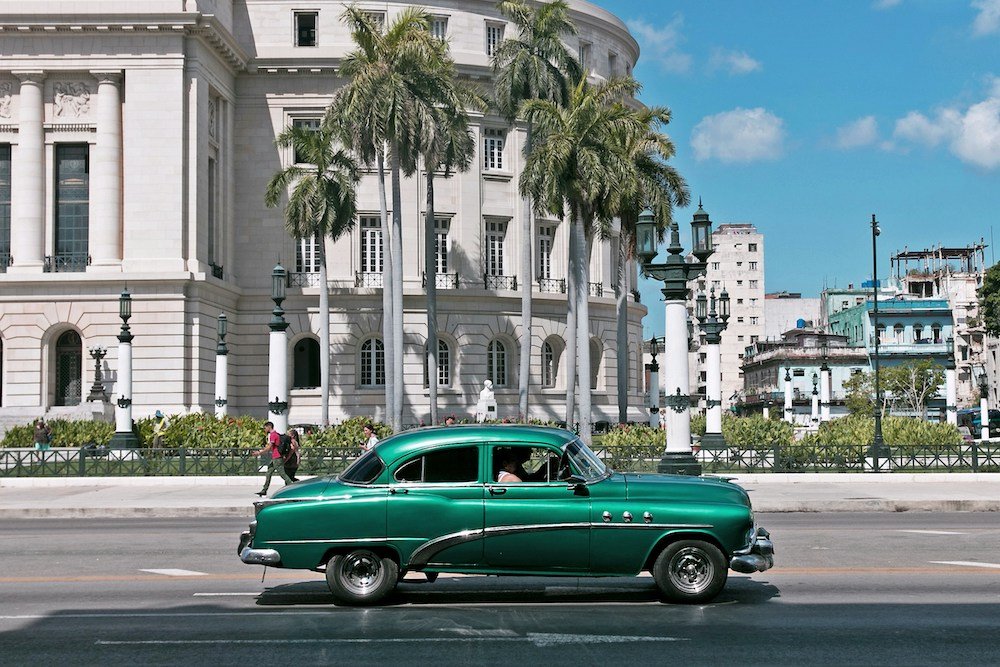
Cuba’s political landscape is characterized by its socialist system and the central role of the Communist Party in shaping government policies and institutions.
Understanding Cuba’s governance and political structure provides valuable insight into the nation’s history, ideology, and contemporary challenges.
Cuba operates as a one-party socialist republic, with the Communist Party of Cuba (PCC) serving as the vanguard of the revolution and the primary political force in the country.
The government is structured around a centralized system of governance, with power concentrated in the hands of the state and party leadership.
The National Assembly of People’s Power, Cuba’s legislative body, is responsible for enacting laws and policies in accordance with the principles of socialist ideology and the objectives of the revolution.
The executive branch is headed by the Council of Ministers, which oversees the implementation of government programs and initiatives.
The Communist Party of Cuba (PCC) plays a pivotal role in shaping Cuba’s political agenda and guiding the nation’s socio-economic development.
As the vanguard of the revolution, the PCC advocates for socialist principles, national sovereignty, and the welfare of the Cuban people.
The PCC’s Central Committee and Politburo exercise authority over key government institutions and oversee the formulation of party policies and directives.
Party membership is highly selective and reserved for individuals committed to upholding the ideals of Marxism-Leninism and the legacy of the revolution.
Cuba faces a range of challenges and opportunities in its political landscape, shaped by both domestic and international factors.
Economic constraints, limited access to information, and restrictions on political freedoms present ongoing challenges to Cuba’s political system and governance.
At the same time, Cuba’s political landscape is evolving in response to changing global dynamics and internal pressures for reform.
Recent efforts to modernize the economy, attract foreign investment, and improve diplomatic relations signal a willingness to adapt to new realities while preserving core socialist principles.
As Cuba navigates the complexities of the 21st century, the resilience of its political institutions and the commitment of its people to the ideals of the revolution will continue to shape the nation’s trajectory and its place in the global community.
Famous Landmarks and Attractions in Cuba

Cuba’s rich history, vibrant culture, and stunning landscapes have endowed the island with a wealth of famous landmarks and attractions that captivate visitors from around the globe.
From historic sites to natural wonders, Cuba offers a tapestry of experiences that celebrate its heritage and allure.
A. Iconic Landmarks and Historical Sites in Cuba
Cuba’s storied past is reflected in its iconic landmarks and historical sites, each bearing witness to the island’s tumultuous history and enduring spirit of resilience. Among the most notable landmarks are:
- Havana Vieja: The historic heart of Havana, Havana Vieja is a UNESCO World Heritage Site renowned for its colonial architecture, cobblestone streets, and bustling plazas.
- El Morro Fortress: Perched on the shores of Havana Bay, El Morro Fortress is a centuries-old bastion that once defended the city against pirate attacks and foreign invasions.
- Trinidad: A well-preserved colonial town nestled between the mountains and the sea, Trinidad enchants visitors with its colorful streets, historic squares, and Spanish colonial architecture.
B. Popular Tourist Attractions and Destinations in Cuba
Cuba’s natural beauty and cultural richness are showcased in its diverse array of tourist attractions and destinations, drawing travelers to explore its enchanting landscapes and vibrant communities.
Some of the most popular attractions include:
- Varadero Beach: With its crystalline waters and powdery white sands, Varadero Beach is a paradise for sun-seekers and water enthusiasts, offering a range of recreational activities and seaside resorts.
- Viñales Valley: A UNESCO World Heritage Site renowned for its stunning karst landscapes and tobacco plantations, Viñales Valley is a haven for nature lovers and outdoor adventurers.
- Santiago de Cuba: The birthplace of the Cuban Revolution, Santiago de Cuba is a vibrant city steeped in history and culture, known for its lively music scene, Afro-Cuban traditions, and colorful street festivals.
C. Cultural Festivals and Events that Showcase Cuba’s Heritage
Cuba’s cultural heritage comes to life in its vibrant festivals and events, which celebrate the island’s diverse traditions, music, and artistry.
From carnivals to fiestas, these cultural celebrations offer a glimpse into Cuba’s soul and spirit. Some of the most renowned festivals include:
- Havana Carnival: A colorful extravaganza of music, dance, and street performances, the Havana Carnival brings communities together to celebrate Cuban culture and heritage.
- Cuban Jazz Festival: Held annually in Havana and other cities across the island, the Cuban Jazz Festival showcases the talents of local and international musicians, highlighting Cuba’s rich musical legacy.
- Cuban Cigar Festival: A celebration of Cuba’s famed cigar industry, the Cuban Cigar Festival offers enthusiasts the chance to sample premium cigars, attend workshops, and immerse themselves in the art of cigar making.
From its historic landmarks to its vibrant festivals, Cuba’s attractions embody the island’s timeless allure and cultural richness, inviting travelers to discover the magic of the Caribbean’s largest island.
Conclusion
As the largest island in the Caribbean, Cuba stands as a beacon of culture, history, and natural beauty that captivates the imagination and inspires wonder.
From its pristine beaches to its vibrant cities, Cuba’s allure lies in its rich tapestry of experiences and its enduring spirit of resilience.
Cuba’s expansive terrain and diverse landscapes make it a jewel in the crown of the Caribbean archipelago.
With its lush forests, towering mountains, and picturesque coastlines, Cuba offers a myriad of adventures waiting to be explored.
Cuba’s influence extends far beyond its shores, shaping the cultural, political, and economic landscape of the entire Caribbean region.
As a bastion of resistance against colonial oppression and a beacon of socialism in the Americas, Cuba’s legacy reverberates throughout the Caribbean and the world.
Cuba’s appeal lies not only in its natural beauty and historic landmarks but also in the warmth and hospitality of its people.
From the lively rhythms of salsa music to the savory flavors of Cuban cuisine, Cuba’s cultural heritage is as vibrant as it is diverse.
As a geographical landmark, Cuba serves as a bridge between continents and cultures, a crossroads where history and tradition converge to create a tapestry of experiences unlike any other.
Its impact on the Caribbean region and the world at large is profound, reflecting the resilience and spirit of a nation that has weathered storms and emerged stronger than ever.
In the heart of the Caribbean, Cuba stands as a testament to the enduring power of human ingenuity and the boundless beauty of the natural world.
As travelers and explorers, let us continue to cherish and celebrate Cuba’s legacy, honoring its past while embracing its future with hope and optimism.
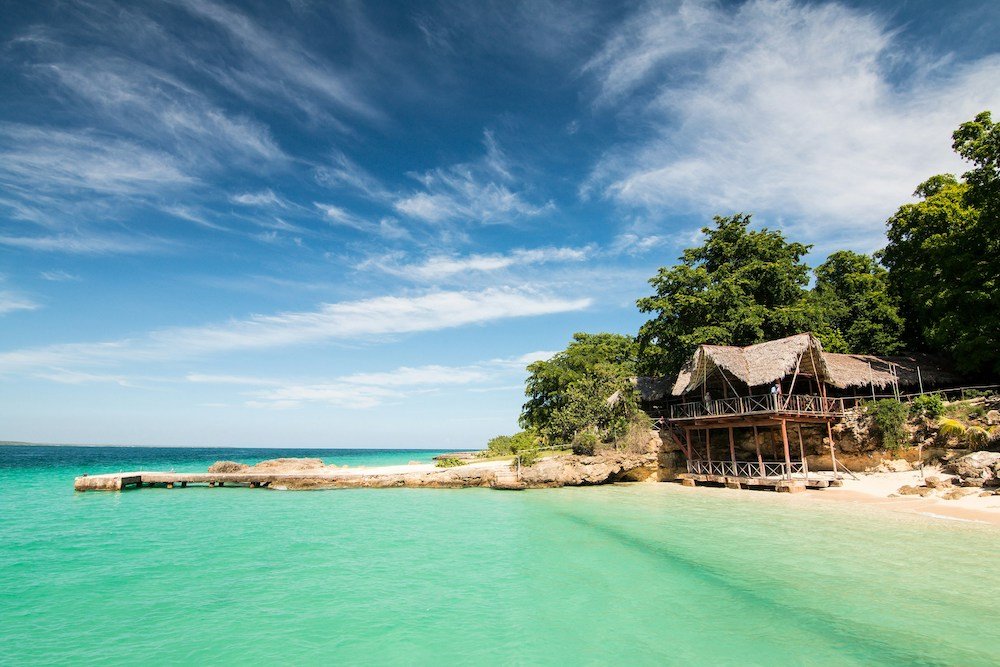
FAQ’s About What is the Largest Island in the Caribbean:
What island is bigger Jamaica or Cuba?
Cuba is bigger than Jamaica. With an area of approximately 109,884 square kilometers (42,426 square miles), Cuba is the largest island in the Caribbean, while Jamaica is significantly smaller in size.
What are the 4 main Caribbean islands?
The four main Caribbean islands, often referred to as the Greater Antilles, are Cuba, Hispaniola (comprising Haiti and the Dominican Republic), Jamaica, and Puerto Rico. These islands are the largest and most populous in the Caribbean region.
Is Cuba or Hispaniola bigger?
Cuba is bigger than Hispaniola. While both islands are significant in size, Cuba is the largest island in the Caribbean, covering approximately 109,884 square kilometers (42,426 square miles), whereas Hispaniola, which comprises Haiti and the Dominican Republic, has a total area of around 76,192 square kilometers (29,418 square miles).
What is the largest Caribbean island by population?
The largest Caribbean island by population is Hispaniola. Hispaniola is home to two countries: Haiti and the Dominican Republic. Combined, the population of Hispaniola surpasses that of Cuba, making it the most populous island in the Caribbean.
Which is the richest Caribbean island?
The determination of the richest Caribbean island can vary depending on the criteria used, such as GDP per capita, natural resources, and economic stability. However, historically, islands such as the Bahamas, Trinidad and Tobago, and the Cayman Islands have been considered among the wealthiest in the Caribbean region due to factors like tourism, oil and gas reserves, and financial services.
What are the 3 largest Caribbean islands?
The three largest Caribbean islands are Cuba, Hispaniola (comprising Haiti and the Dominican Republic), and Jamaica. These islands are known for their diverse landscapes, rich cultures, and significant contributions to the history and development of the Caribbean region.





